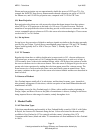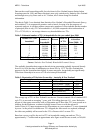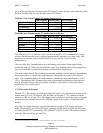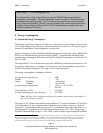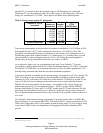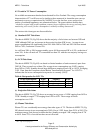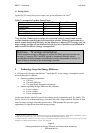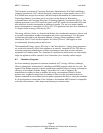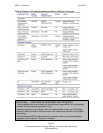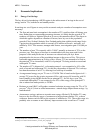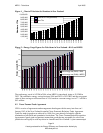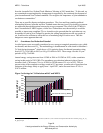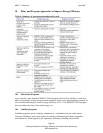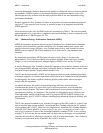MEPS − Televisions April 2005
Page 18
A study produced for the Energy Efficiency and Conservation Authority by
Wise Analysis Ltd
The European Association of Consumer Electronics Manufacturers (EACEM) established a
voluntary agreement in 1997 with the European Commission to target standby losses of TVs.
EACEM has now merged its activities with the European Information & Communications
Technology Industry Association and is now known as the European Information,
Communications and Consumer Electronics Technology Industry Associations (EICTA). The
updated agreement covers CRT based televisions, non CRT based televisions and DVD’s and
now addresses on mode consumption in addition to standby. The aim is to reduce standby
power consumption to a maximum of 1W by 2007. The agreement also aims for a minimum of
5% improvement in energy efficiency by 2007.
The energy efficiency index is a formula which takes into consideration numerous factors such
as on mode consumption, standby consumption and screen size/format/type. The European
Commission also funds a pan-European database of energy efficient appliances called
HomeSpeed. The EC have also developed an Eco-Label (“Flower”) that applies to more
environmentally friendly products and services.
The International Energy Agency (IEA) has a “One Watt Initiative” energy saving program to
cut world-wide electricity losses from appliances in stand-by, launched in 1999. This aims to
encourage equipment manufacturers towards consuming no more than one watt when the
equipment is in standby mode. The Australian Government has endorsed the one watt standby
target for appliances sold in Australia. New Zealand has yet to formally endorse targets.
8.2 Mandatory Programs
So far no mandatory programs set minimum standards for TV energy efficiency although
China is planning the introduction of a labelling and MEPS program within the next year. The
Japanese Top Runner program, is based around target standard values for energy consumption
efficiency in accordance with the Energy Conservation Law, and is obligatory for
manufacturers to adhere to them to enhance the energy consumption efficiency of their
products on a weighted average basis. In contrast to other overseas jurisdictions however,
Japanese standards do not exclude from the market equipment that fails to satisfy the standards.
It will be important to ensure that a New Zealand or Australasian MEPS scheme is compatible
with other such schemes, with a larger manufacturing or consumer base.



